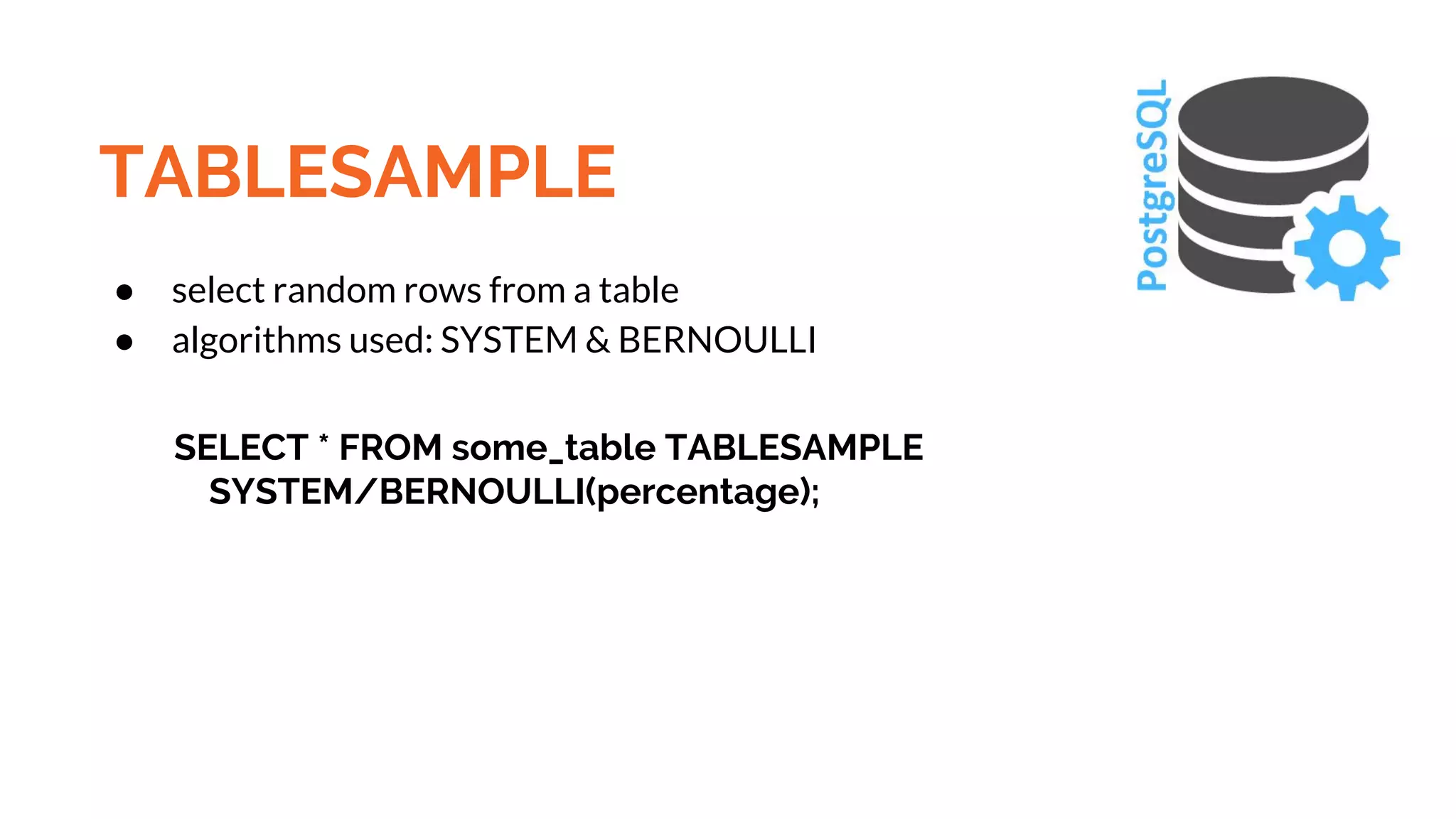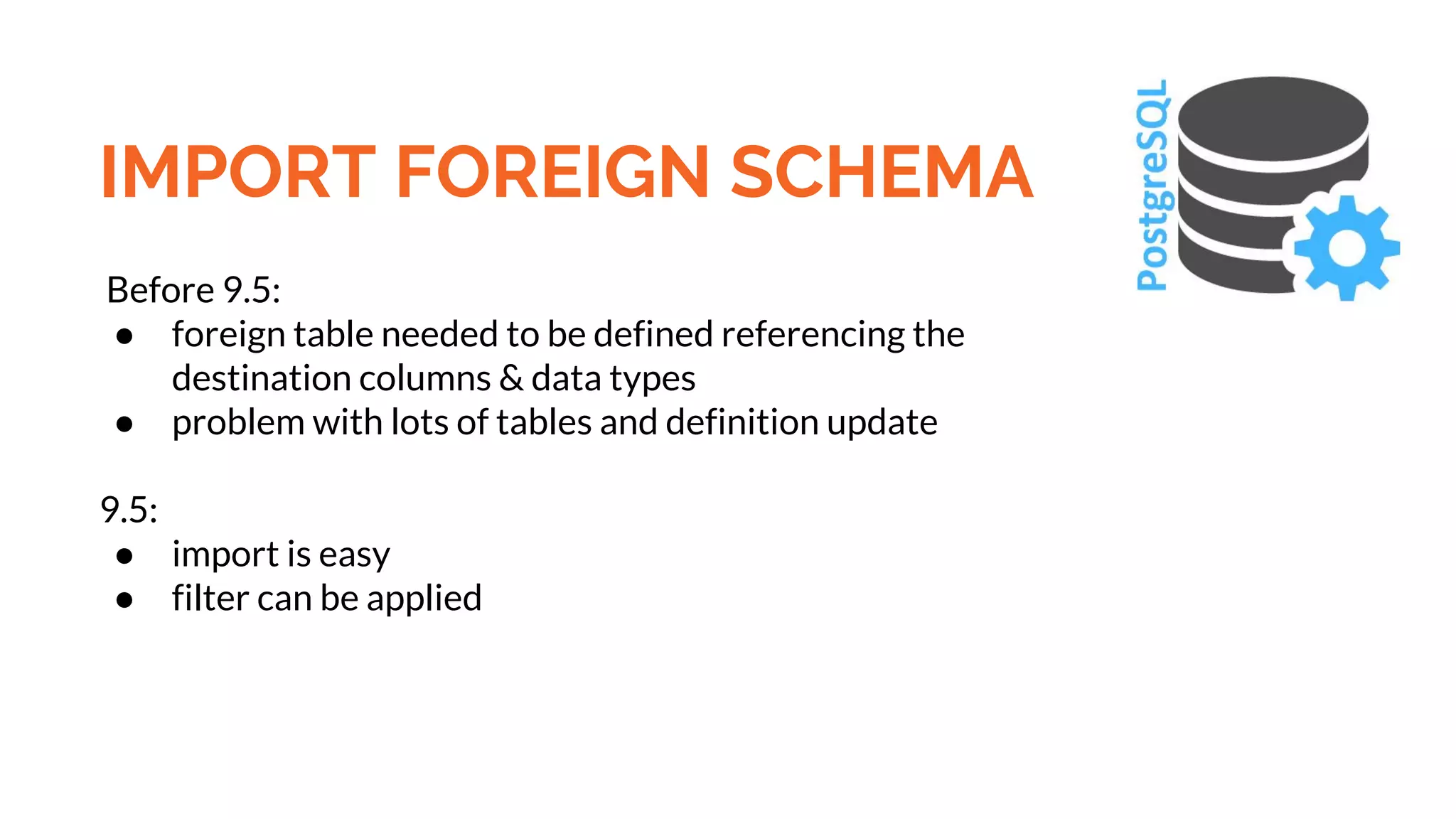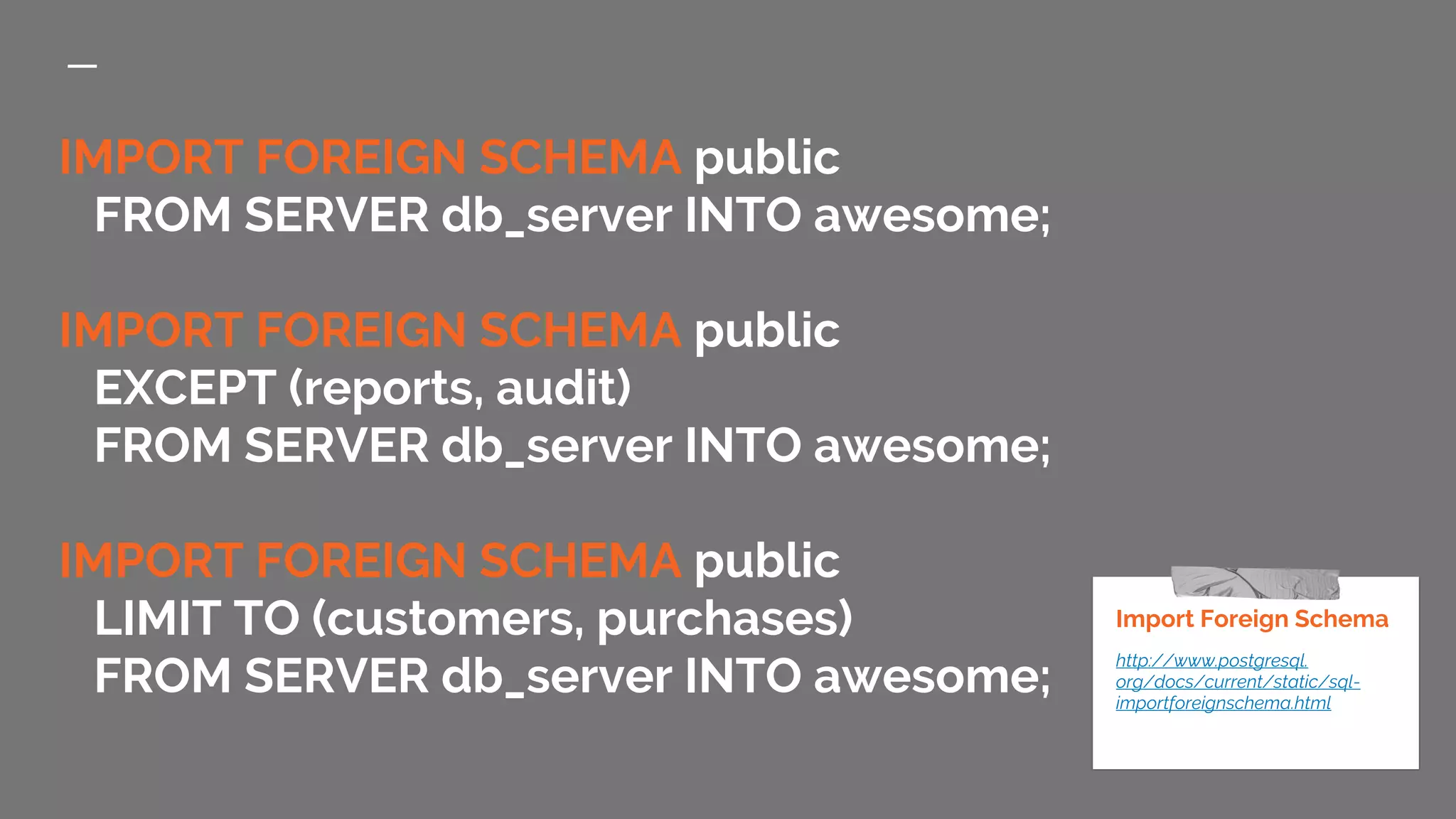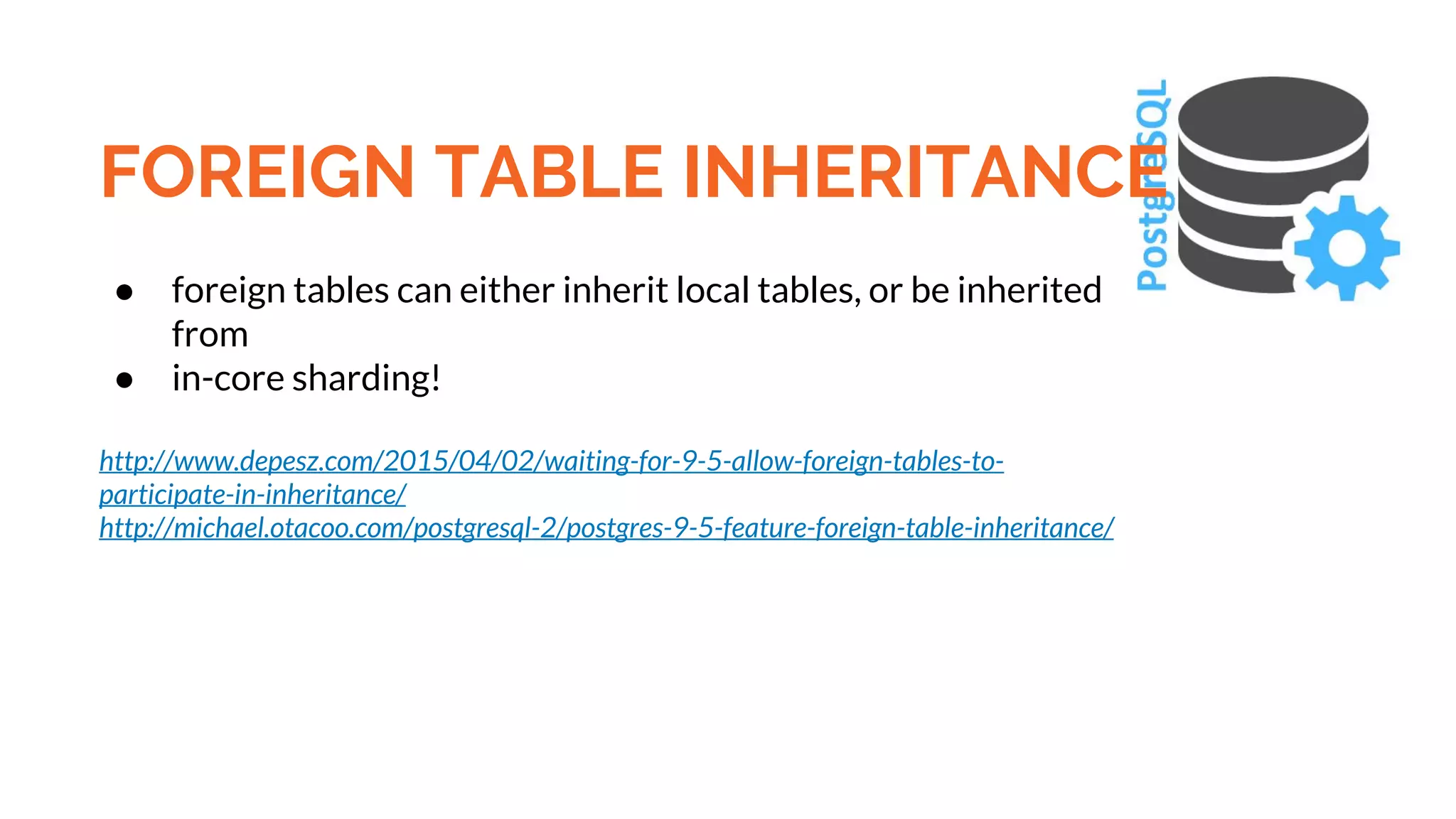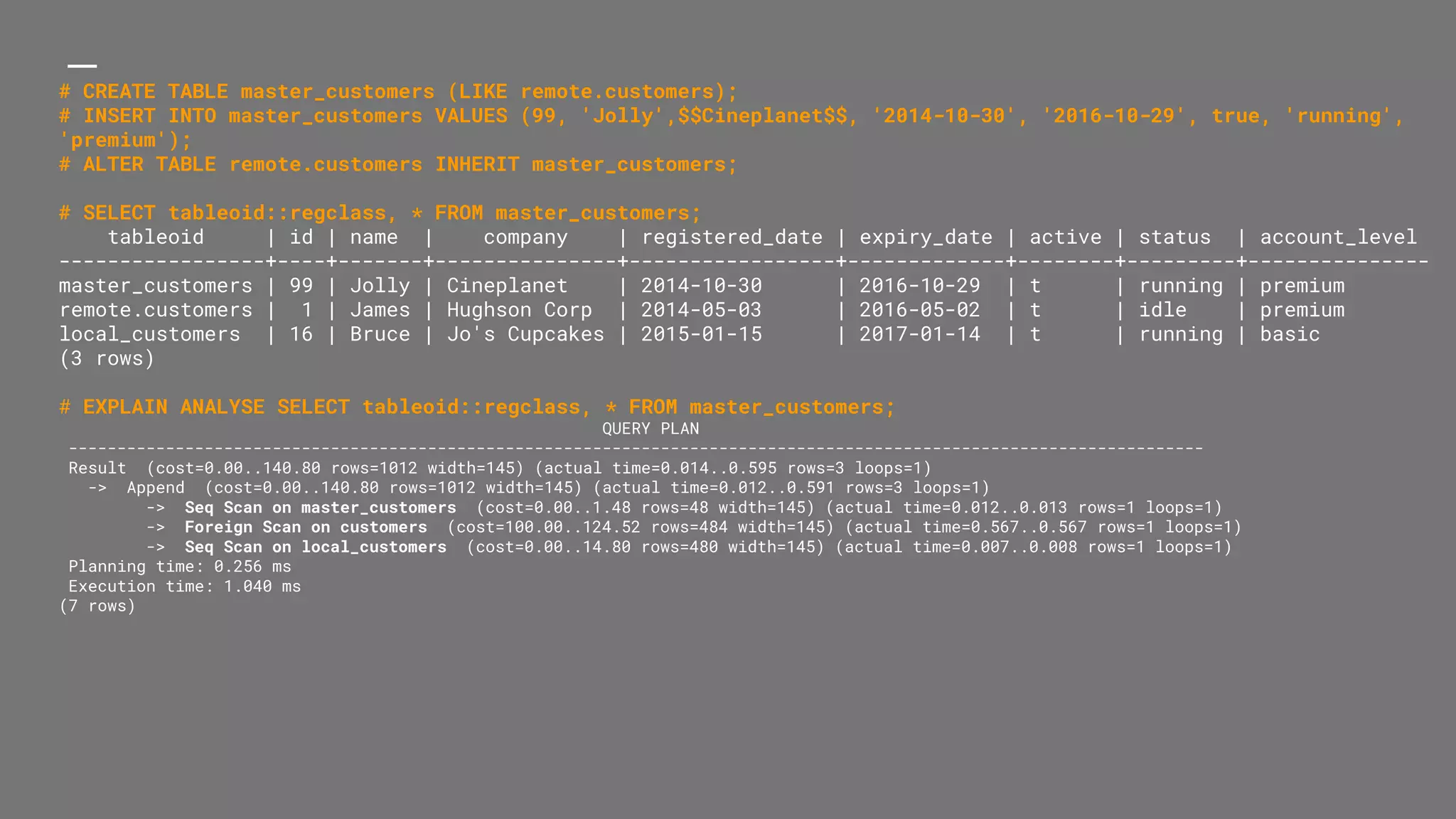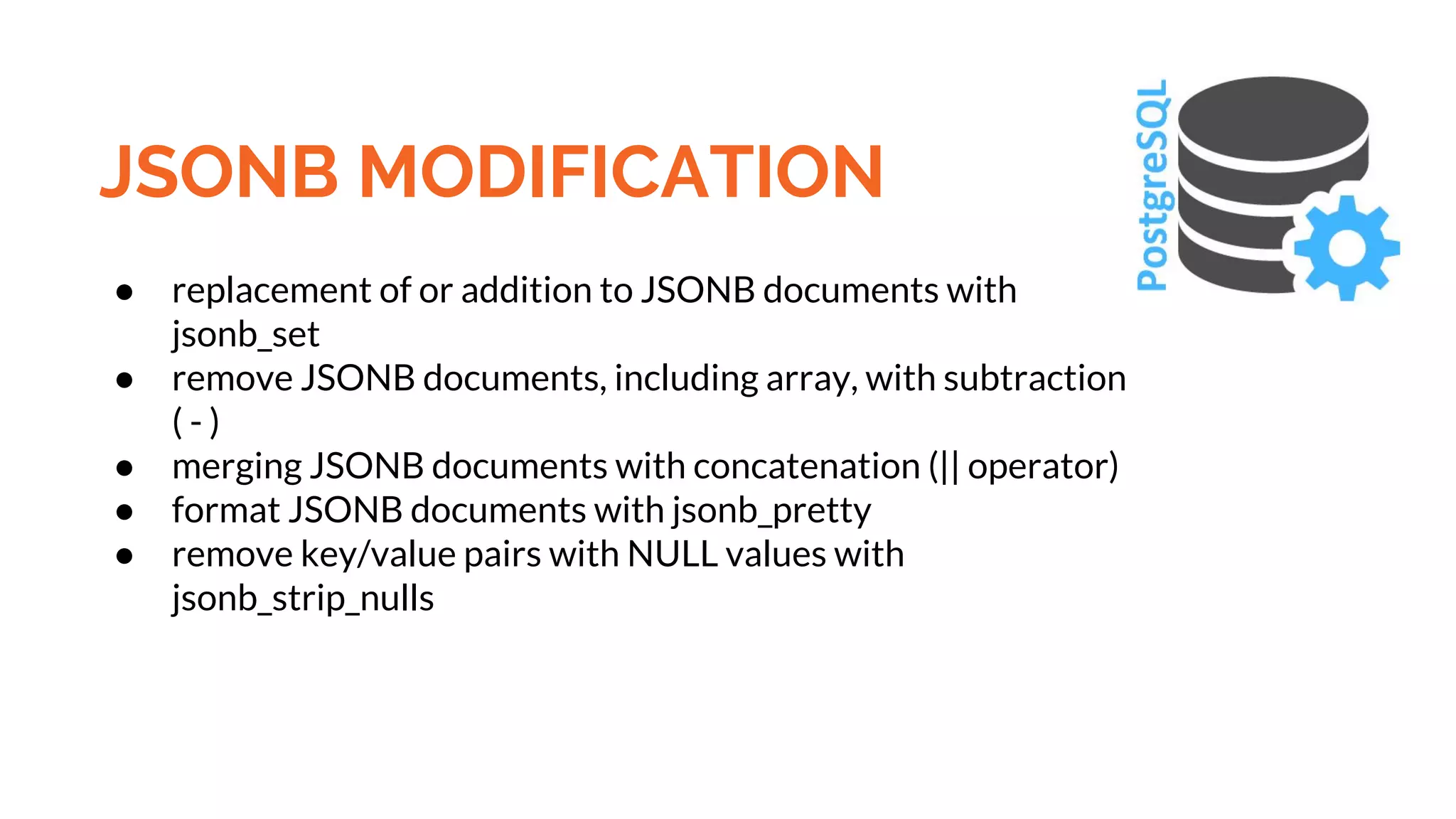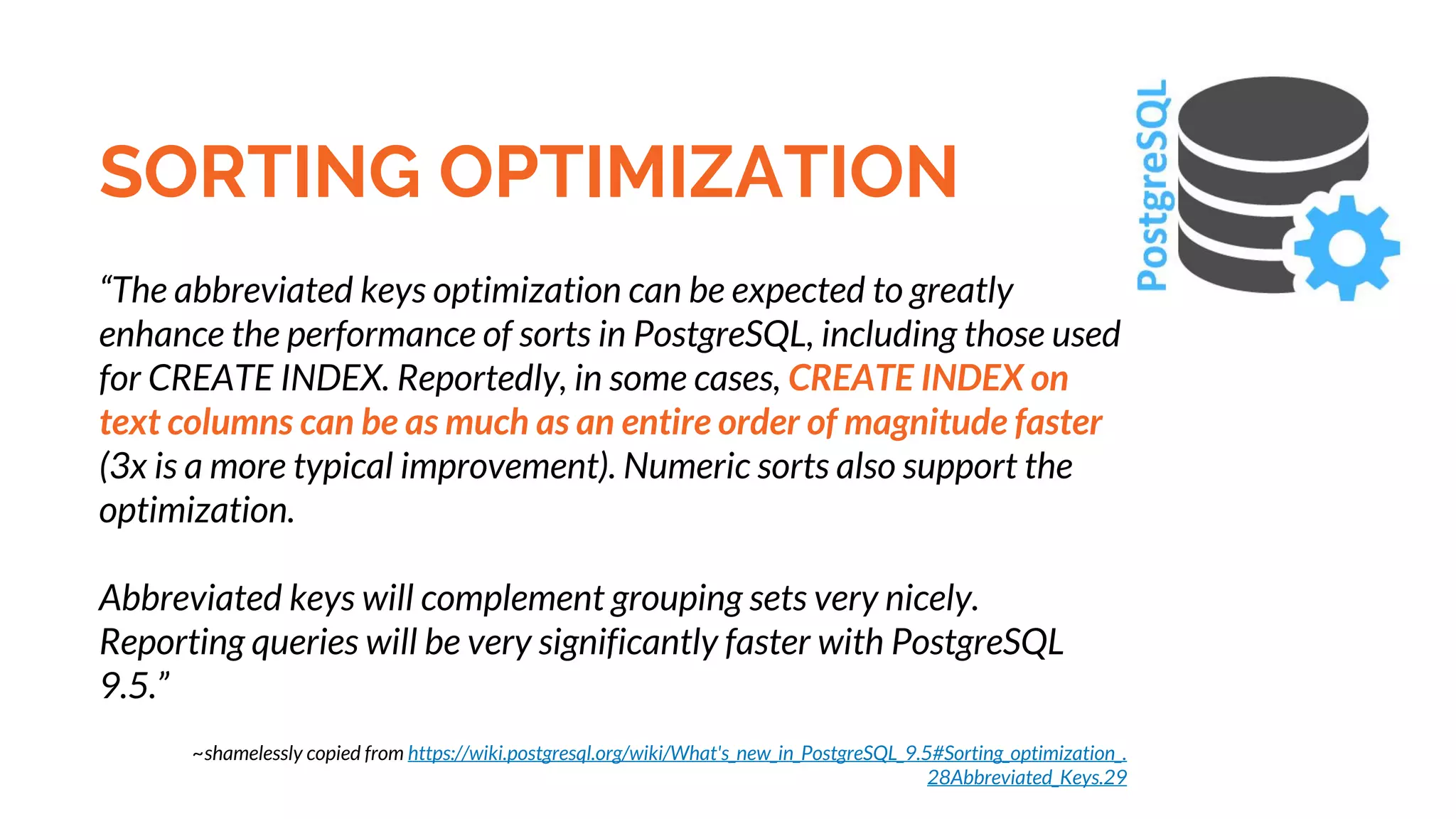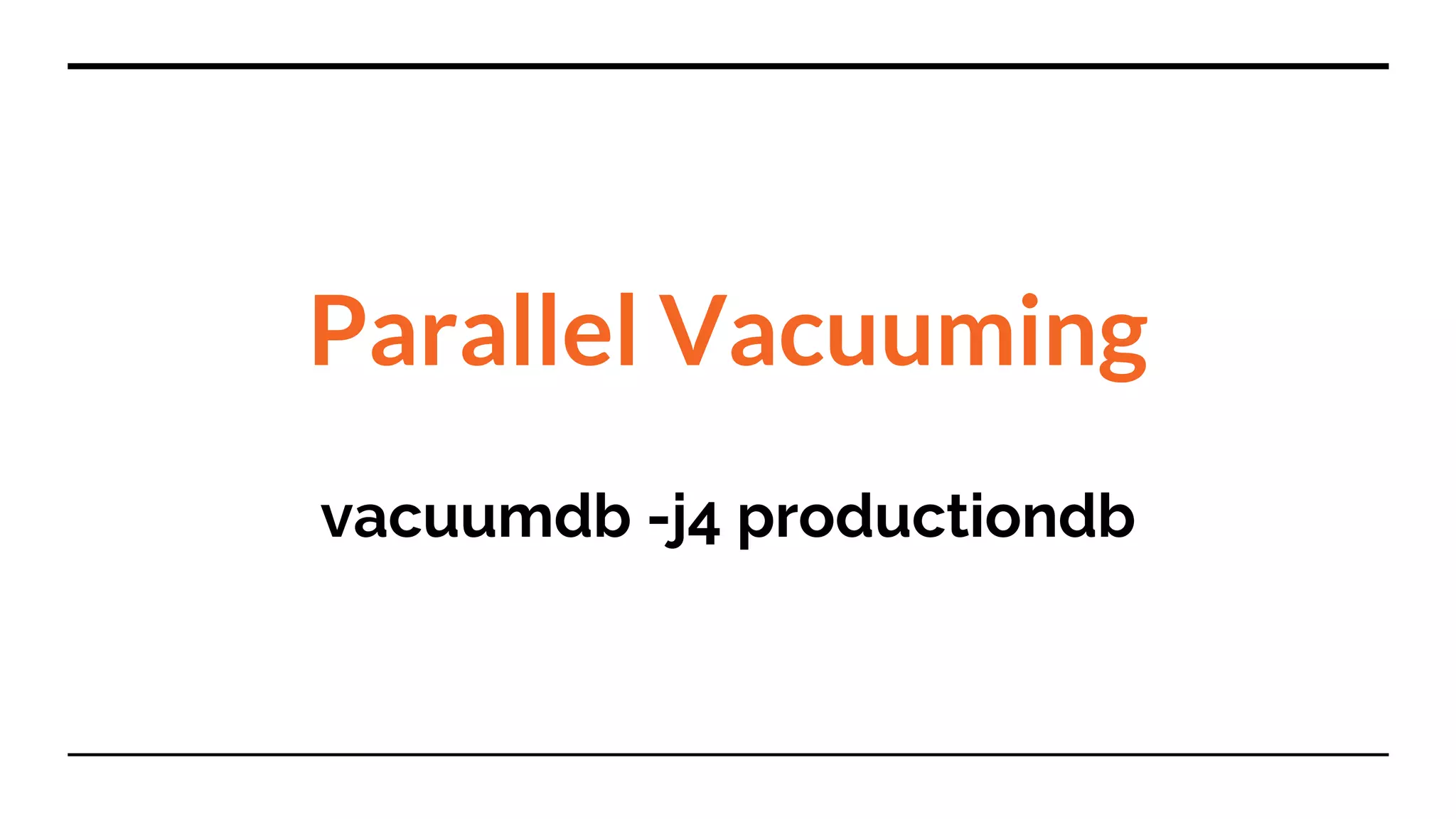PostgreSQL 9.5 includes several new features to improve performance and functionality for developers: UPSERT allows inserting or updating a row based on unique constraints. BRIN indexes provide very small indexes ideal for large naturally ordered tables. GROUPING SETS, CUBE and ROLLUP allow multiple groupings in a single query. Row-level security policies control access at the row level. SKIP LOCKED ignores locked rows. TABLESAMPLE selects random rows. IMPORT FOREIGN SCHEMA simplifies importing schemas from other databases. Foreign tables can now participate in inheritance. JSONB documents can be modified and merged. Sorting performance is improved with abbreviated keys. Parallel vacuuming allows vacuum operations to use multiple processes.
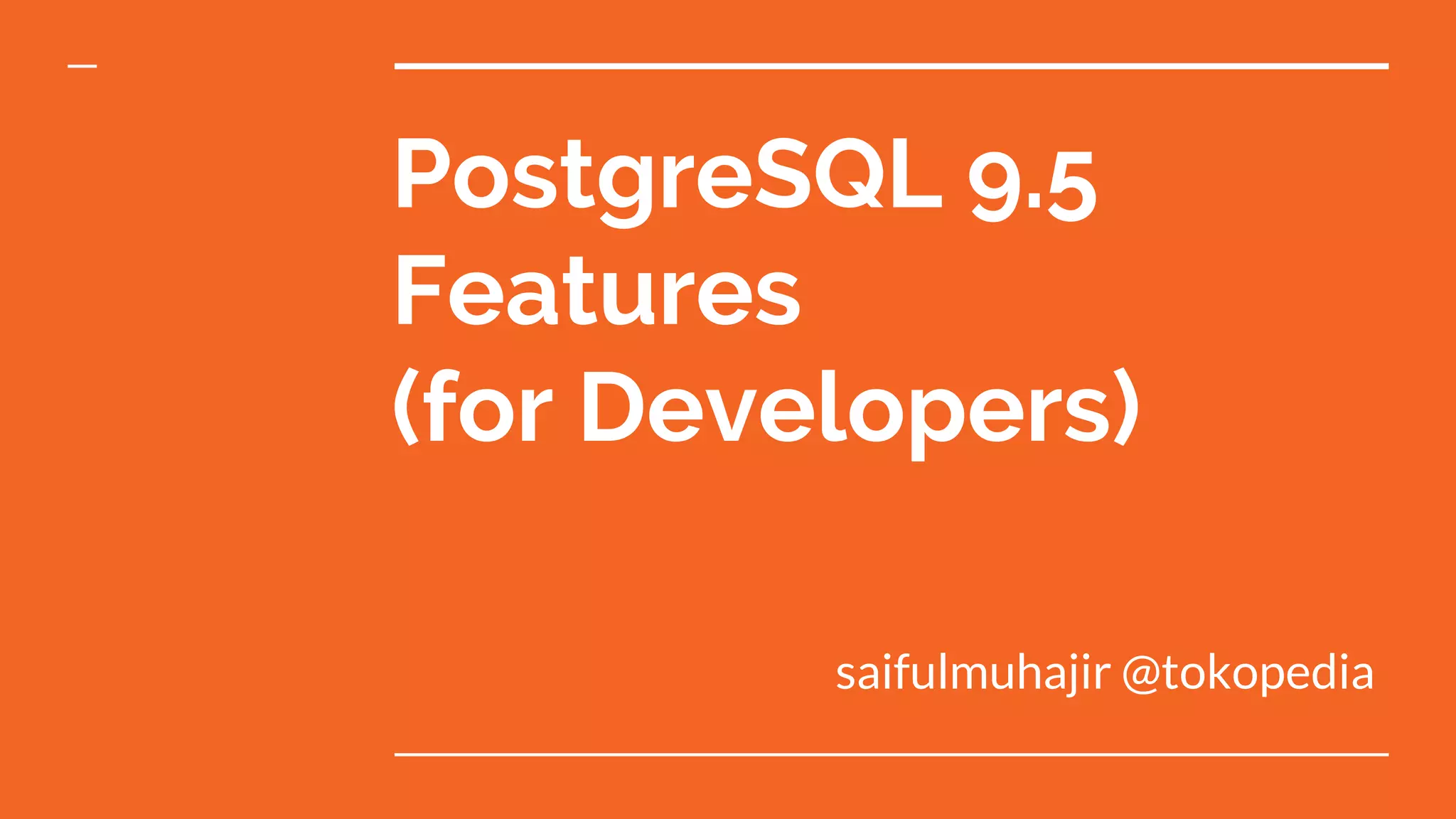
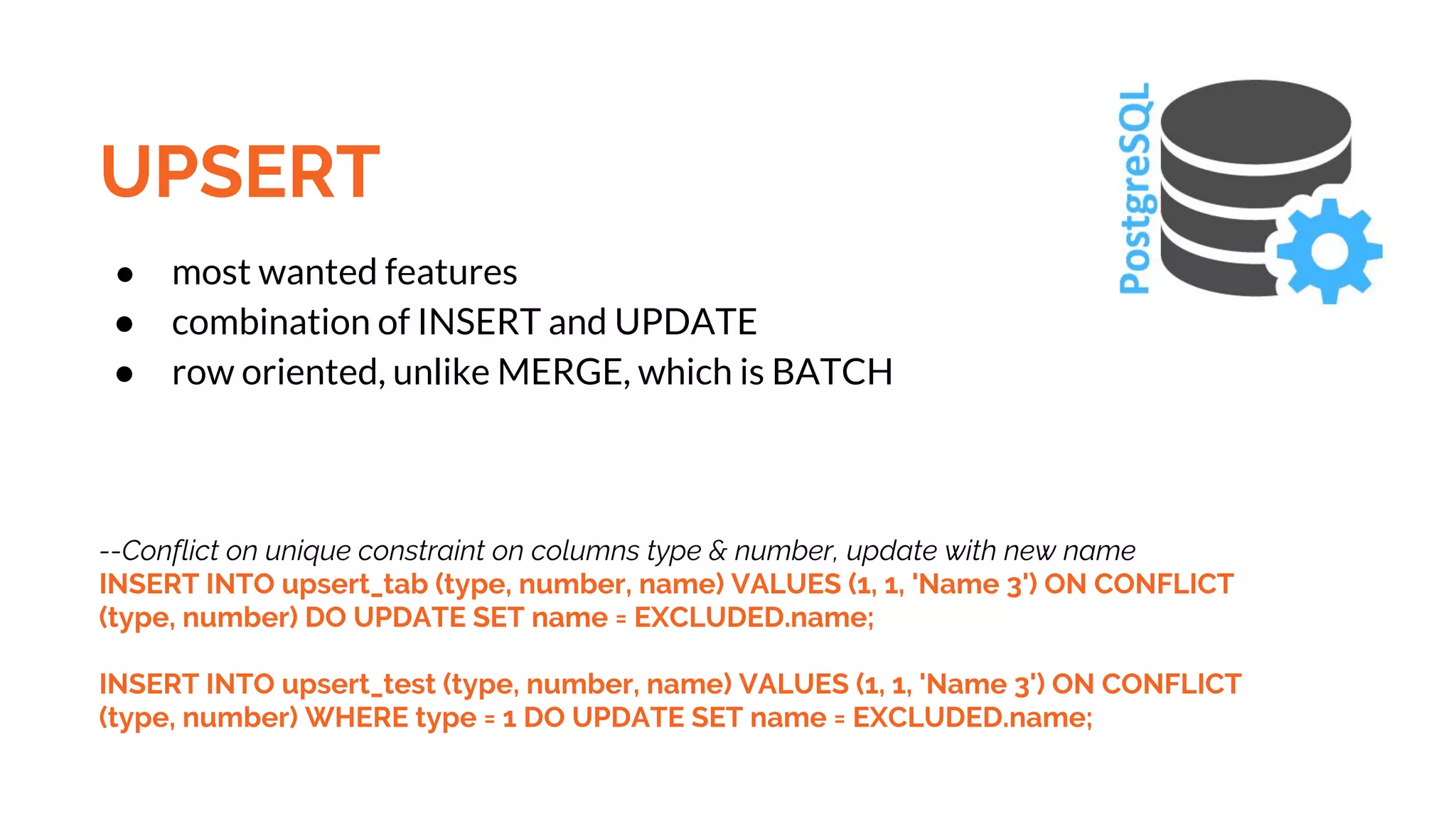
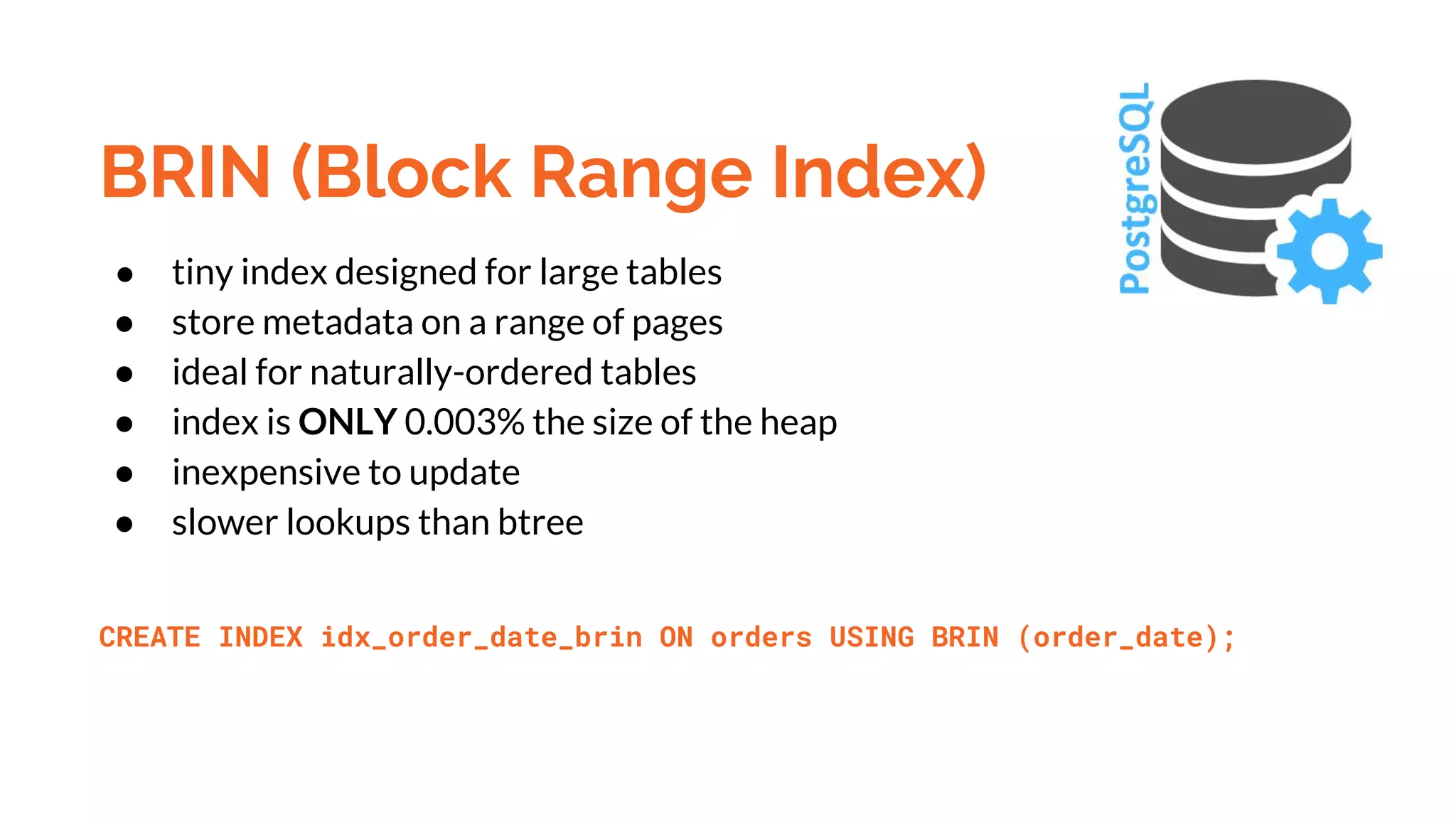
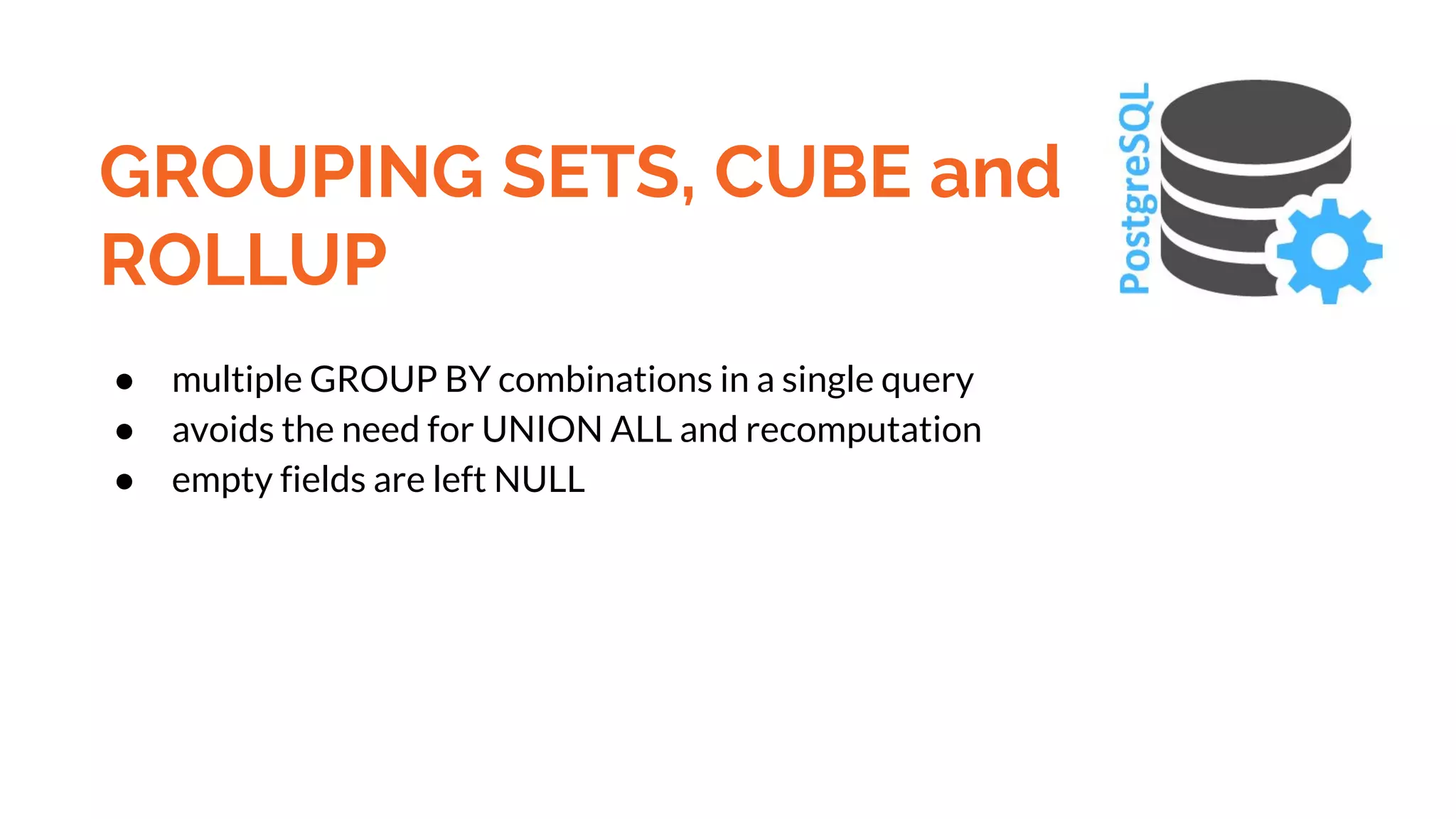
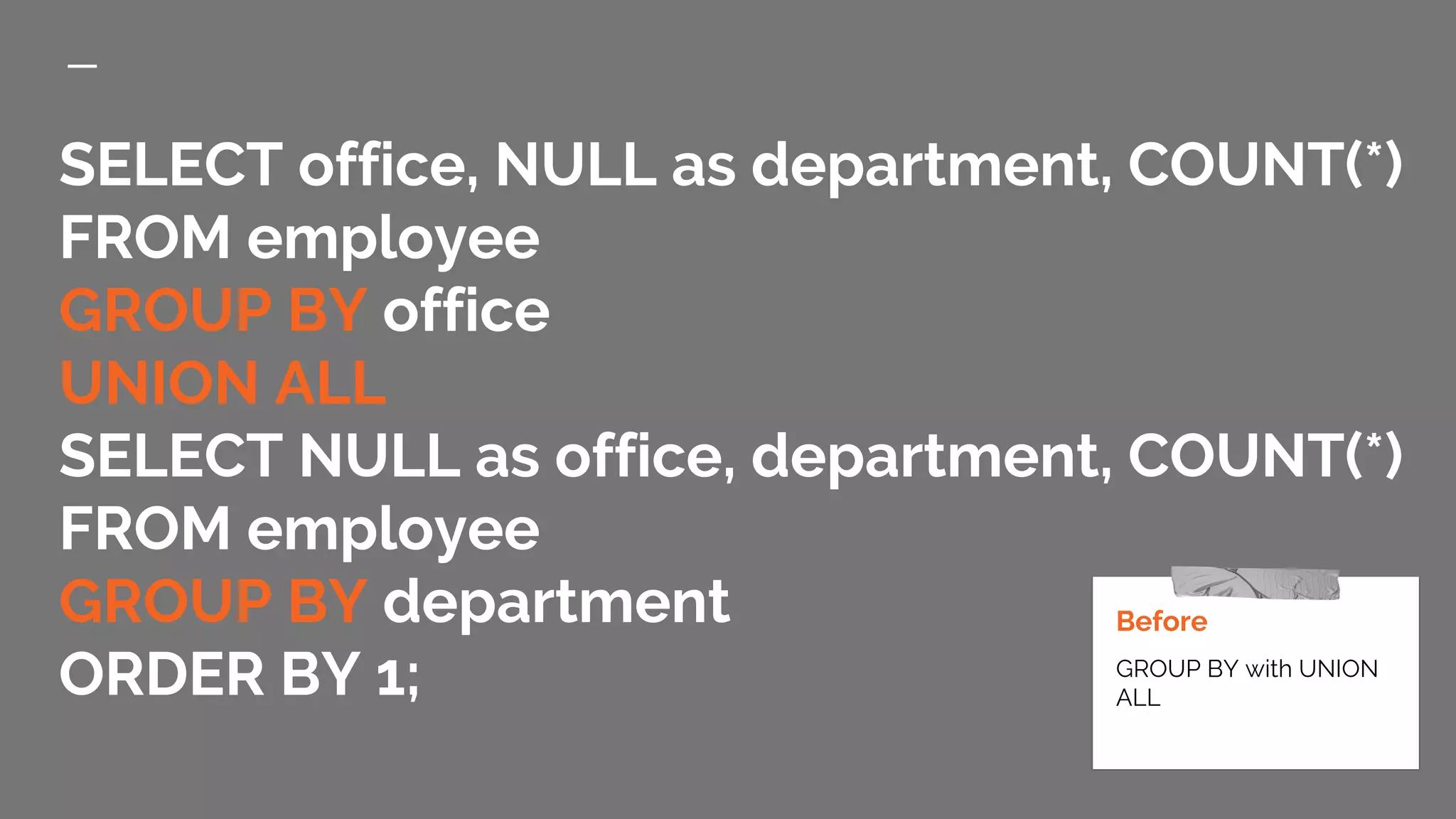
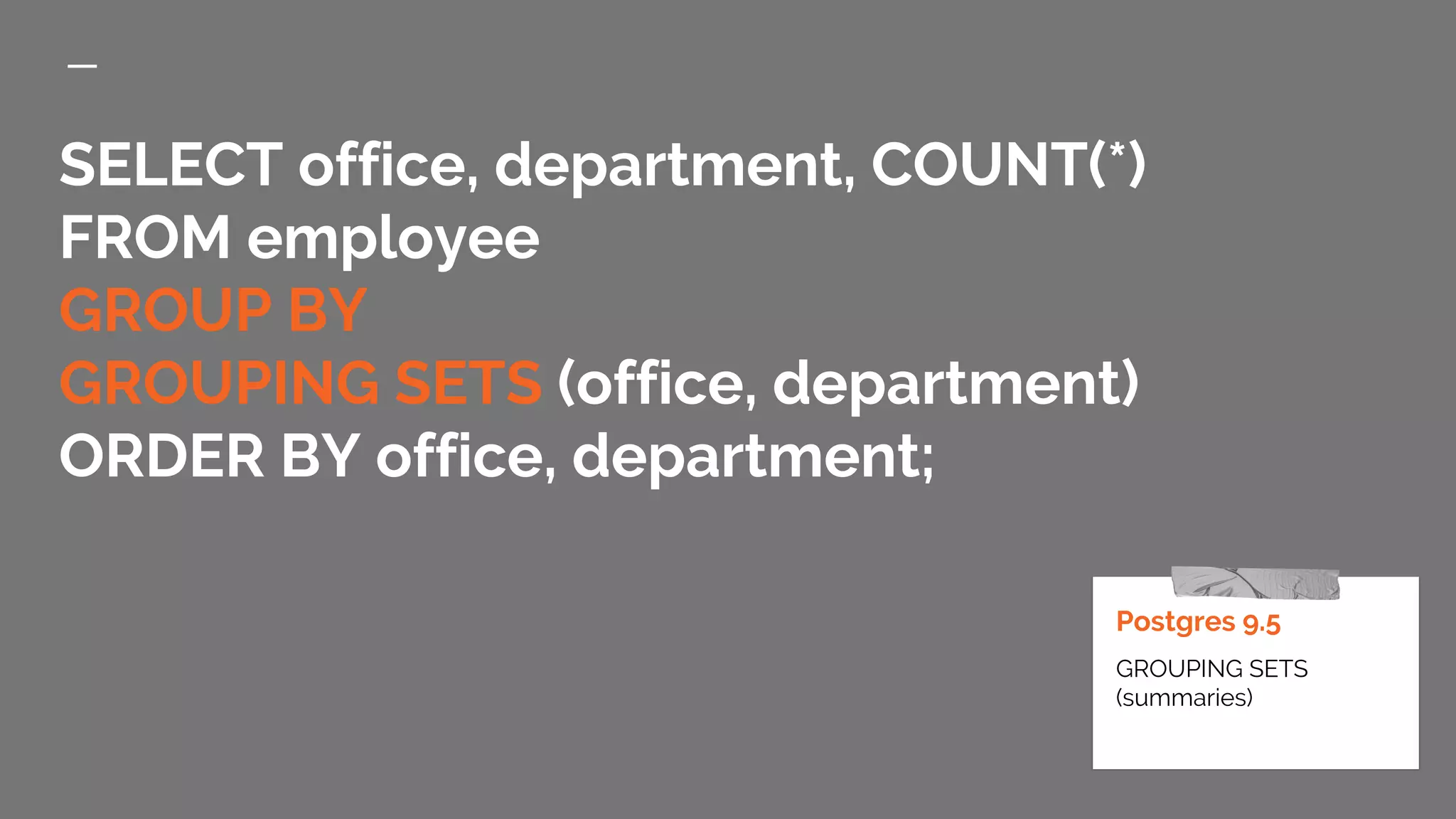
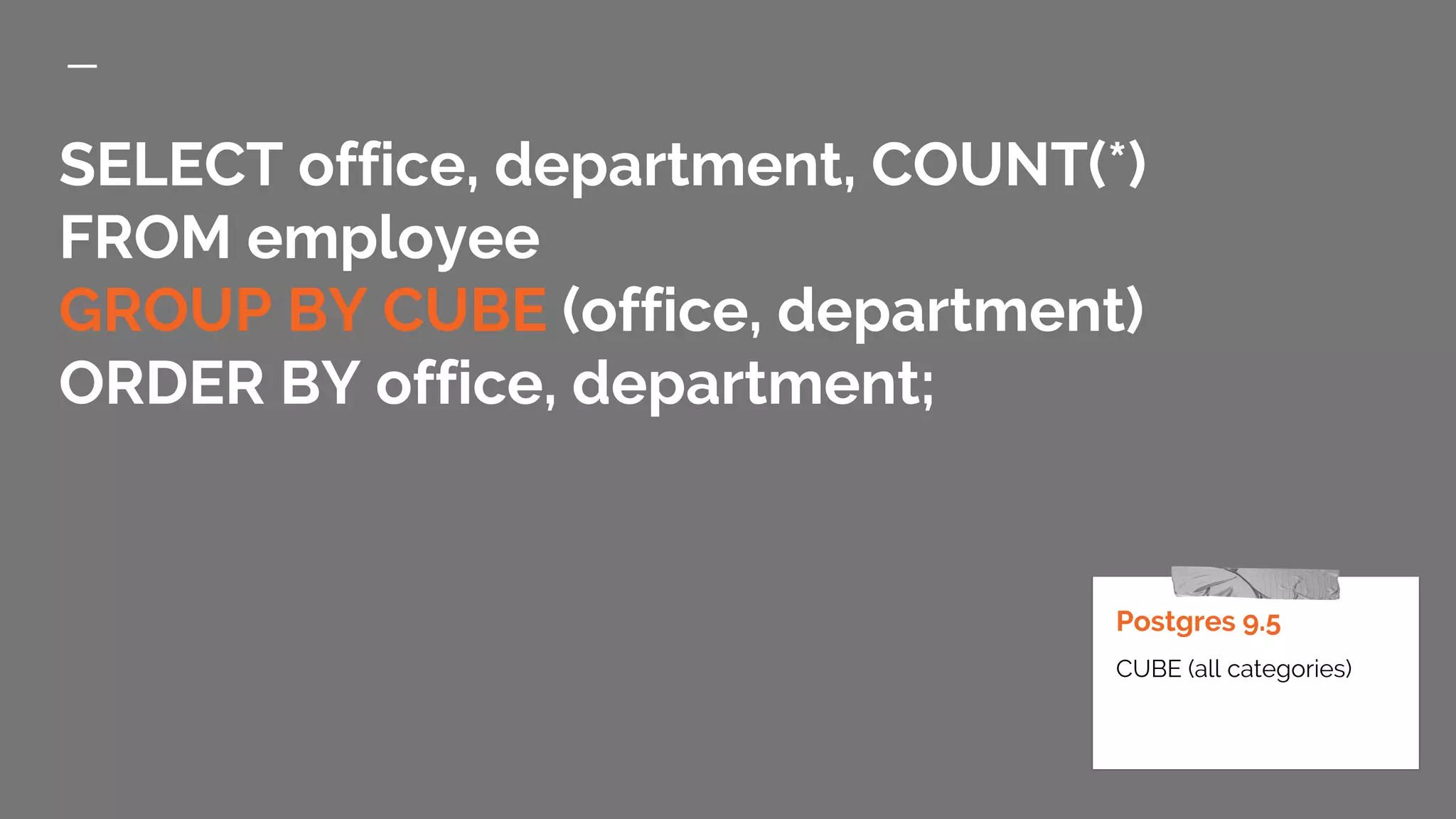
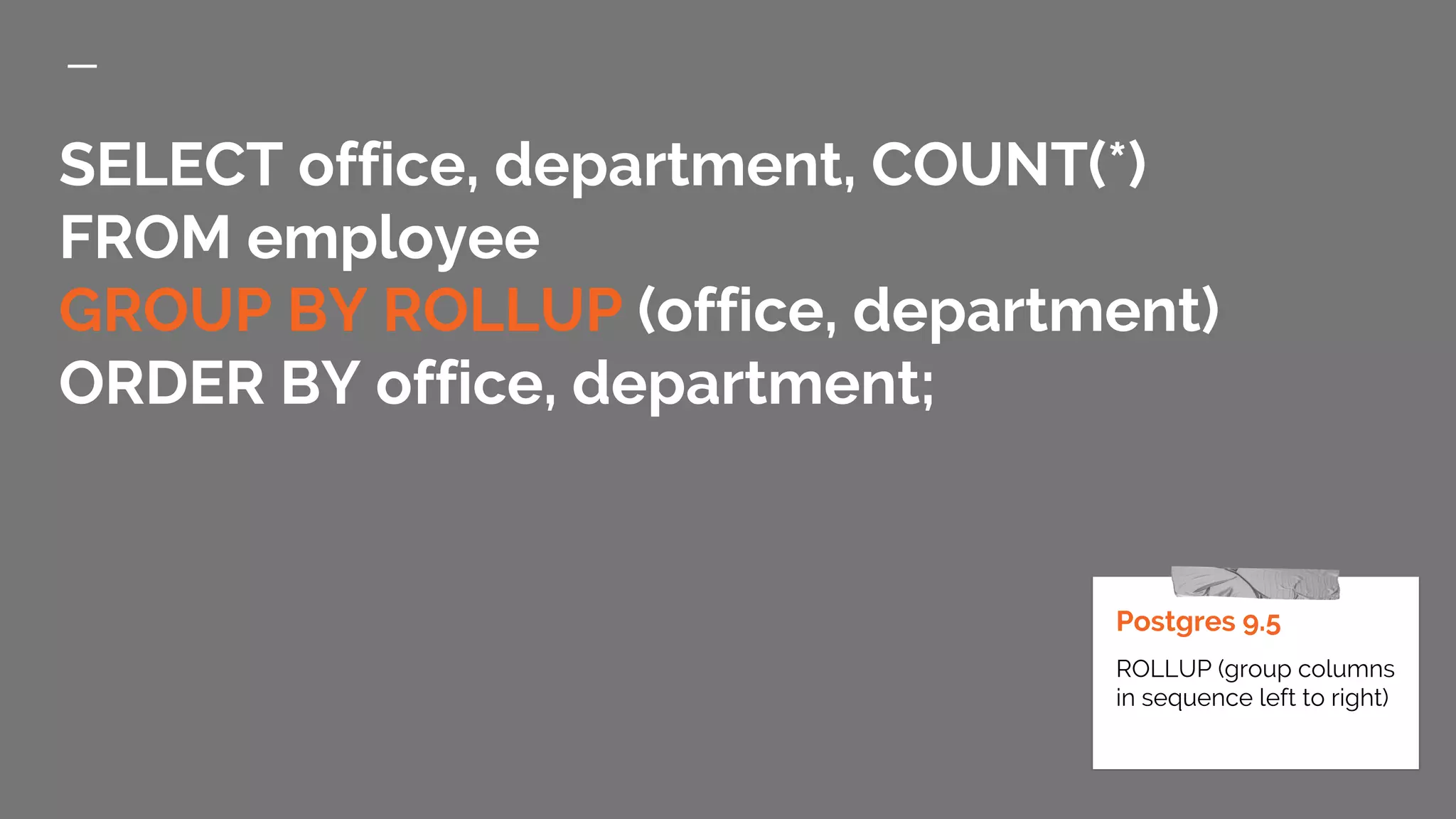
![Row-Level SECURITY POLICY ● SELECT, INSERT, UPDATE, or DELETE permission control on rows with USING ● INSERT or UPDATE control over added and modified rows with CHECK ● expressions can contain checks for the current user, subqueries, time comparisons, and function calls ● enabled with GUC row_security, CREATE POLICY, and ALTER TABLE […] ENABLE ROW LEVEL SECURITY](https://image.slidesharecdn.com/c77f1b03-95d4-461a-b6b0-b198af757fce-160427091327/75/PostgreSQL-9-5-Features-9-2048.jpg)
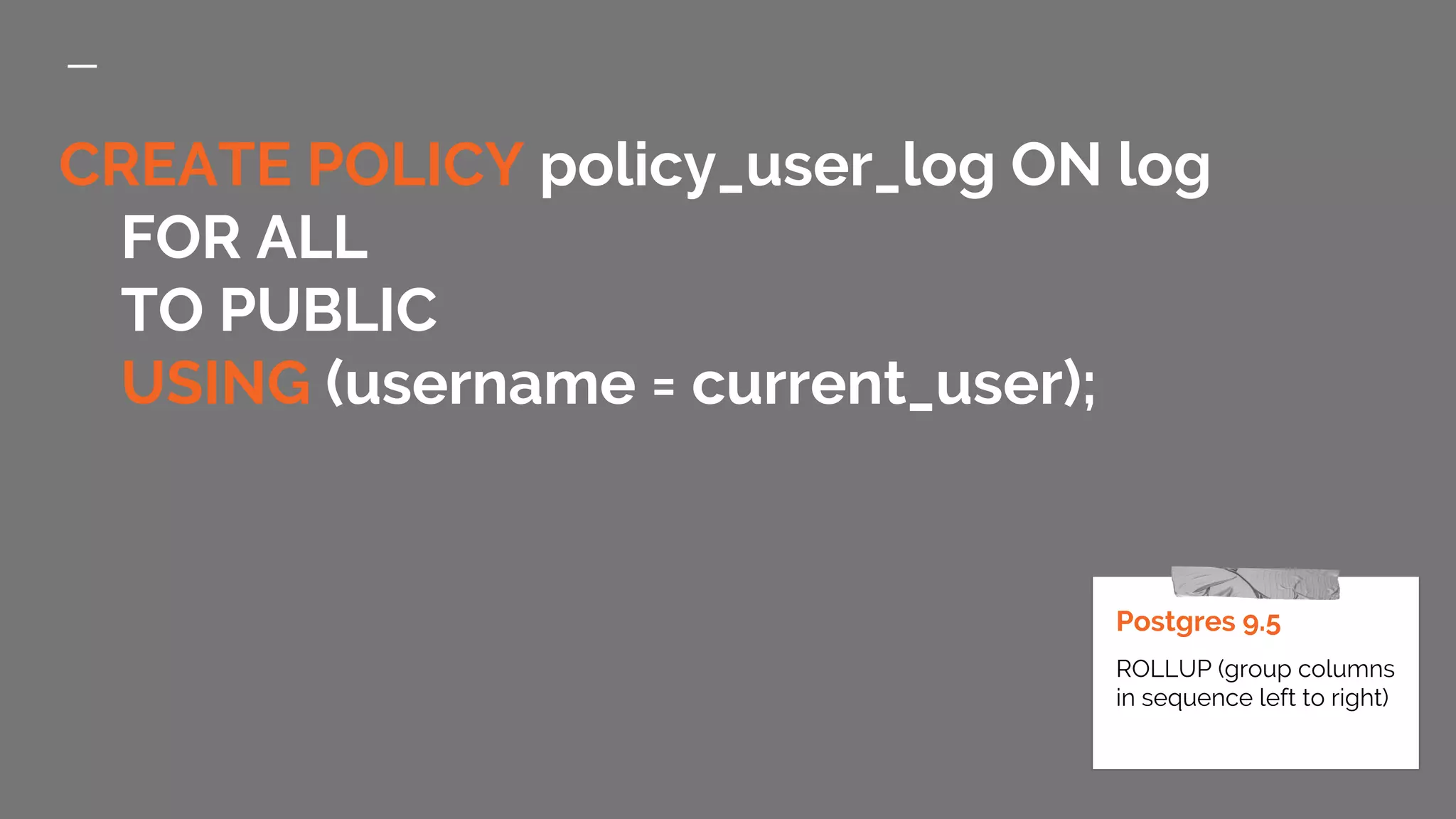
![SKIP LOCKED ● ignore the LOCKED rows and continue SELECT [...] SKIP LOCKED](https://image.slidesharecdn.com/c77f1b03-95d4-461a-b6b0-b198af757fce-160427091327/75/PostgreSQL-9-5-Features-11-2048.jpg)
